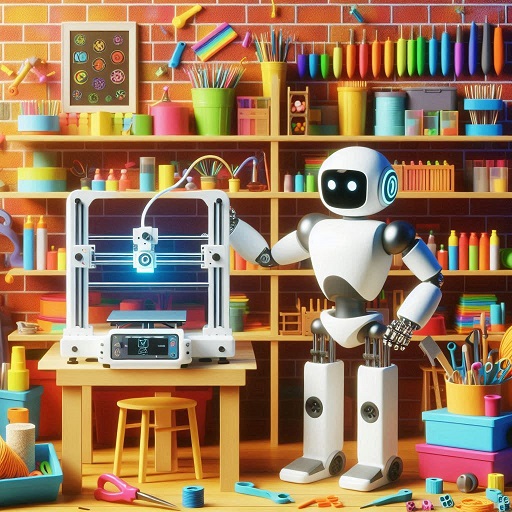3D printing robots are advanced systems that integrate robotic technology with additive manufacturing processes. These robots automate the production of complex, custom-designed objects by layering materials, such as plastics, metals, or ceramics, to create 3D structures.
Importance of 3D Printing Robots in Industry
The integration of 3D printing with robotics is revolutionizing industries by offering unmatched precision, scalability, and efficiency in manufacturing. From aerospace and automotive to healthcare and construction, 3D printing robots are enabling new possibilities for production and innovation.

3D Printing Robots Industry Trends
Growth of 3D Printing Robots in Various Sectors
The adoption of 3D printing robots is growing rapidly across various sectors, particularly in manufacturing and healthcare. Industries are leveraging these technologies to enhance productivity, reduce waste, and enable mass customization.
Technological Advancements Driving Market Growth
Technological advancements, such as improved software integration, AI-driven design optimization, and enhanced material capabilities, are significant drivers of growth in the 3D printing robot market. These innovations are making 3D printing more accessible and efficient.
Adoption Rate Across Different Industries
Industries like aerospace and automotive have the highest adoption rates, owing to the need for precise, lightweight, and complex parts. The medical field is also a major adopter, particularly in the production of implants and prosthetics.
The 3D printing robot industry size was valued at USD 1.6 billion in 2023 and is estimated to reach USD 3.2 billion by 2028, growing at a CAGR of 14.6% during the forecast period.
Discover More About the Future of 3D Printing Robot Industry! Dive deeper into the trends, growth, and opportunities shaping the 3D Printing Robot
3D Printing Robots Industry Segmentation
Segmentation by Component
The 3D printing robot market can be segmented by components into hardware, software, and services. Hardware includes the robotic arms and 3D printers, while software comprises design and simulation tools. Services include maintenance, installation, and training.
Segmentation by Robot Type
Robot types in this market include articulated robots, Cartesian robots, and SCARA robots, each offering different levels of precision and flexibility, catering to specific industrial needs.
Segmentation by Application
Applications of 3D printing robots span from prototyping and tooling to direct part manufacturing and construction. These robots are also used in educational settings for research and development purposes.
Segmentation by End-user Industry
End-user industries include aerospace, automotive, healthcare, construction, and consumer goods. Each industry has distinct requirements and benefits from 3D printing robots in unique ways, contributing to the overall market diversity.
Top Companies in the Market
Overview of Leading Companies in 3D Printing Robots Industry
The 3D printing robot market is dominated by several key players who are driving innovation and growth. These companies are investing heavily in research and development to stay ahead in the competitive landscape.
Company Profiles and Offerings
Leading companies such as ABB, KUKA, and Stratasys offer a range of 3D printing solutions, from robotic arms to fully integrated systems. These companies focus on providing scalable, efficient, and versatile solutions to meet industry demands.
Competitive Landscape
The competitive landscape is shaped by ongoing advancements and strategic partnerships. Companies are competing on innovation, cost-effectiveness, and the ability to provide comprehensive solutions tailored to specific industry needs.
3D Printing Robots Industry Regional Analysis
North America
North America leads the 3D printing robot market, driven by strong industrial demand and significant investments in technology. The region’s focus on advanced manufacturing techniques positions it as a global leader.
Europe
Europe is another major player in the market, with a strong emphasis on sustainability and precision engineering. Countries like Germany and the UK are at the forefront, with significant contributions to automotive and aerospace sectors.
Asia-Pacific
Asia-Pacific is witnessing rapid growth in the 3D printing robot market, fueled by the expansion of manufacturing industries in countries like China and Japan. The region is becoming a hub for technological innovation and production.
Rest of the World
The rest of the world, including Latin America and the Middle East, is gradually adopting 3D printing robots, driven by the need for advanced manufacturing capabilities and the desire to stay competitive in global markets.
3D Printing Robots Industry Opportunities and Challenges
Key Opportunities for Growth
Key opportunities in the 3D printing robot market include the expansion into new industries, advancements in materials science, and the integration of AI and IoT for smarter, more efficient manufacturing processes.
Major Challenges Facing the Industry
Despite its potential, the industry faces challenges such as high initial costs, technical complexity, and the need for skilled labor. Overcoming these challenges is crucial for wider adoption.
Strategies to Overcome Challenges
Strategies to overcome these challenges include investing in training and education, reducing costs through technological advancements, and fostering collaboration between industry stakeholders to drive innovation.
3D Printing Robots Industry Future Outlook
Emerging Trends in 3D Printing Robots
Emerging trends include the use of 3D printing robots in sustainable manufacturing, the development of multi-material printing capabilities, and the growing role of AI in optimizing production processes.
Potential Impact of AI and Machine Learning
AI and machine learning are set to revolutionize 3D printing by enabling more precise designs, predictive maintenance, and automated quality control, leading to more efficient and cost-effective production.
Future Applications and Innovations
Future applications of 3D printing robots include the creation of complex bio-materials, the construction of large-scale structures, and the potential for on-demand manufacturing in remote or challenging environments.
The 3D printing robot industry is poised for significant growth, driven by technological advancements and increasing adoption across various sectors. The market is characterized by a diverse range of applications, with opportunities for continued innovation.
As the industry evolves, 3D printing robots will play an increasingly important role in shaping the future of manufacturing. Companies that invest in this technology will be well-positioned to capitalize on the emerging trends and opportunities in this dynamic market.
